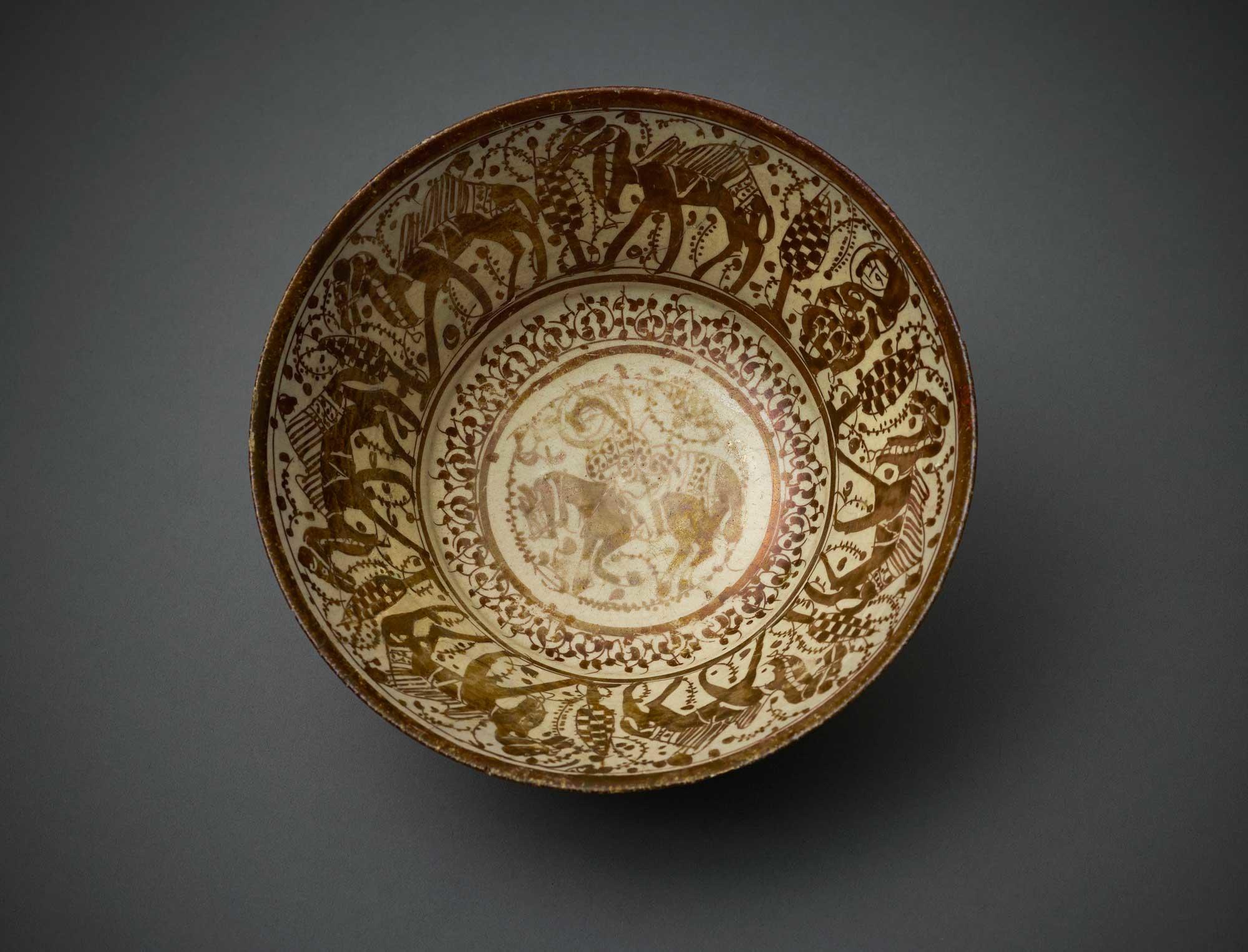Click on the image to zoom
Bowl
- Accession Number:AKM557
- Place:Iran
- Dimensions:Diameter 17 cm, height 8 cm
- Date:early 13th centuries
- Materials and Technique:Fritware, lustre-painted
The mounted horseman — whether prince, hero, or warrior — remains one of the most common visual motifs in works of Islamic art. Here, the figure of a horseman is depicted at the centre of a conical bowl surrounded by a superb depiction of a merchant caravan. The sides of the bowl are decorated with six camels laden with bags led by an attendant. The artist has given the caravan a lively sense of animation, with the camels stepping forward to provide a feeling of motion that suits the circular nature of the vessel. The figures are rendered in metallic enamel paint that offers a golden lustrous sheen against the white background. Trees with a checkerboard pattern and branches with small leaves complete the landscape setting for the caravan. This style of fine depiction on thinly potted fritware ceramics was common in Kashan, Iran, in the late twelfth and early thirteenth centuries. There are many surviving examples, including a similar bowl in the Aga Khan Museum’s collection, where the central mounted figure is encircled by horses instead of the camel caravan.
Note: This online resource is reviewed and updated on an ongoing basis. We are committed to improving this information and will revise and update knowledge about this object as it becomes available.


